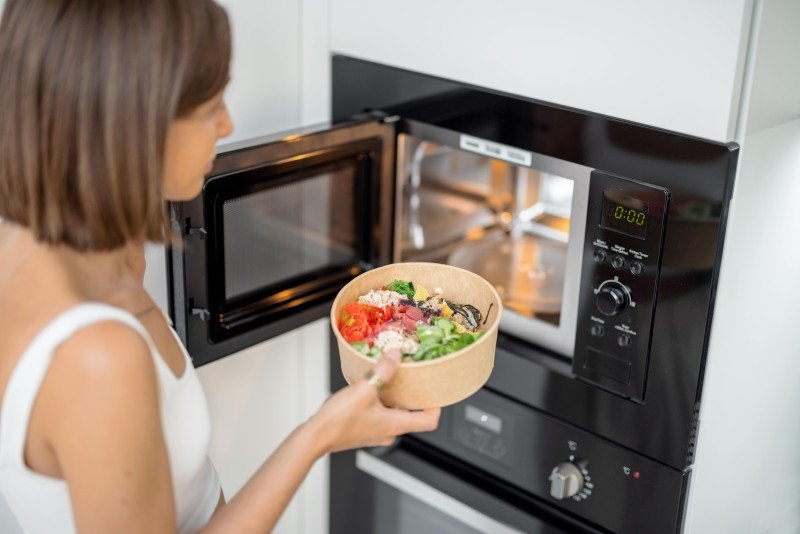Understanding Electric Ovens and Hobs: Your Guide to Cooking Efficiency
Electric ovens and hobs have actually changed the cooking landscape, providing home cooks and expert chefs a dependable, efficient, and constant method to prepare meals. As technological developments continue to affect appliance style, the efficiency and functionality of electric cooking systems have substantially enhanced. This post explores the functions, advantages, and considerations surrounding electric ovens and hobs, supplying an extensive summary for anyone aiming to update or buy kitchen devices.
What Are Electric Ovens and Hobs?
Electric ovens are kitchen appliances designed for baking, broiling, roasting, and other cooking approaches that need controlled heat. Cheapest Fan Oven utilize electric coils or radiant heat elements to generate and preserve the preferred temperature. Electric hobs, typically referred to as electric cooktops, are flat surface areas with heating elements that permit pots and pans to be put straight on them for cooking.
Table 1: Key Differences Between Electric Ovens and Hobs
| Feature | Electric Oven | Electric Hob |
|---|---|---|
| Primary Function | Baking, roasting, broiling | Heating pots and pans for cooking |
| Heating Method | Electric coils or glowing elements | Induction, glowing, or ceramic components |
| Operation Temperature Range | Approximately 500 ° F (260 ° C | ) Varies by design; usually lower than ovens |
| Cooking Styles | Versatile; suitable for different meals | Mostly stovetop cooking methods |
| Space Requirement | Usually built into kitchen cabinetry | Often standalone or integrated alternatives |
| Energy Consumption | Typically higher, depending on usage | More energy-efficient with induction hobs |
Advantages of Electric Ovens and Hobs
When considering electric ovens and hobs, it's vital to comprehend their numerous advantages, which can improve the cooking experience.
1. Consistent Heating
Electric ovens and hobs supply even and constant heating, which is important for numerous cooking methods. This ensures that meals cook evenly, reducing the chances of overcooking or undercooking certain areas of food.
2. Security Features
Modern electric ovens and hobs come equipped with various security features to avoid mishaps in the kitchen. For circumstances, numerous designs include automatic shut-off functions, hot surface area signs, and kid security locks.
3. Easy to Use
Unlike gas models, electric ovens and hobs are straightforward and easy to use. The simplicity of switching on a dial or pressing a button makes them available for cooks of all ability levels.
4. Versatile Cooking Options
With various cooking methods possible, from baking to simmering, electric designs are versatile sufficient to accommodate a vast array of cooking styles and preferences.
5. Cleaning and Maintenance
Electric ovens usually feature smooth surface areas that are simple to clean, especially designs with self-cleaning abilities. Hobs, particularly induction types, likewise provide a flat surface area that is simple to wipe down, making maintenance a breeze.
Popular Types of Electric Ovens:
- Conventional Ovens: Ideal for traditional baking and roasting.
- Convection Ovens: Circulate hot air for faster, even cooking.
- Microwave Ovens: Use electro-magnetic radiation for fast heating and cooking.
- Toaster Ovens: Small counter top ovens for fast jobs.
Popular Types of Electric Hobs:
- Induction Hobs: Utilize magnetic fields for fast heating and energy efficiency.
- Glowing Hobs: Feature electric coils that warm up to prepare food.
- Ceramic Hobs: Offer a smooth surface area and are simple to tidy.
Considerations When Choosing Electric Ovens and Hobs
While electric ovens and hobs use various advantages, a number of elements ought to be considered to make sure the best fit for your kitchen:
1. Space Availability
Assess the offered kitchen area before purchasing. Determine whether you require an integrated model or a freestanding device, and determine the dimensions carefully to guarantee a great fit.
2. Cooking Needs
Identify your cooking routines and preferences. If you regularly bake large quantities or cook complex meals, think about an oven with innovative features like convection settings or several racks.
3. Energy Efficiency
Try to find energy-efficient models that can assist in saving on energy expenses gradually. Energy Star-rated appliances can be especially cost-efficient.
4. Budget
Set a sensible budget that accounts for both the initial purchase and ongoing operating expense. In addition to the device expense, aspect in installation and potential repairs.
5. Additional Features
Think about whether features like clever innovation, programmable settings, or steam cooking choices are crucial for your cooking design.
Frequently asked question Section
Q: How do I tidy my electric oven?
A: Most electric ovens come with self-cleaning choices. If your model does not have this feature, allow the oven to cool, then clean down surfaces with a mixture of baking soda and water or an industrial oven cleaner.
Q: Is induction cooking safe?
A: Yes, induction cooking is thought about safe as the heating component just activates when compatible pots and pans is in contact with it, reducing the threat of burns.
Q: How long does it take for an electric oven to pre-heat?
A: Preheating times differ based on the oven's model and temperature setting but usually vary from 10 to 15 minutes.
Q: Can I utilize any cookware on an induction hob?
A: No, only ferromagnetic pots and pans is compatible with induction hobs. Look for induction compatibility before usage to avoid damage.
Q: What is the difference between a convection oven and a traditional electric oven?
A: A stove consists of a fan that distributes hot air, making sure even cooking and reduced cooking times compared to a traditional electric oven, which does not have this feature.
Electric ovens and hobs provide a contemporary solution to different cooking requirements, providing effectiveness and dependability in the kitchen. As customers examine their alternatives, understanding the features, types, and considerations will allow them to make informed choices. Whether Sales Ovens is a periodic cook or a culinary lover, electric appliances can enhance the overall cooking experience, bringing convenience and creativity to the table.

